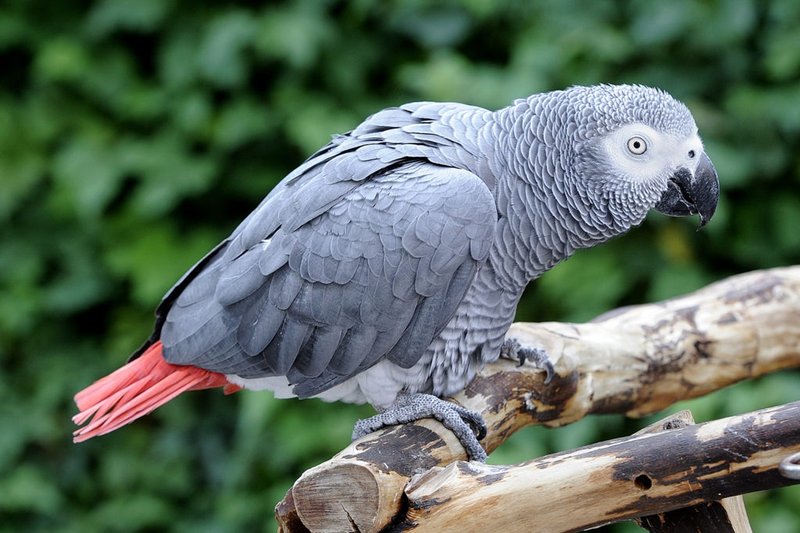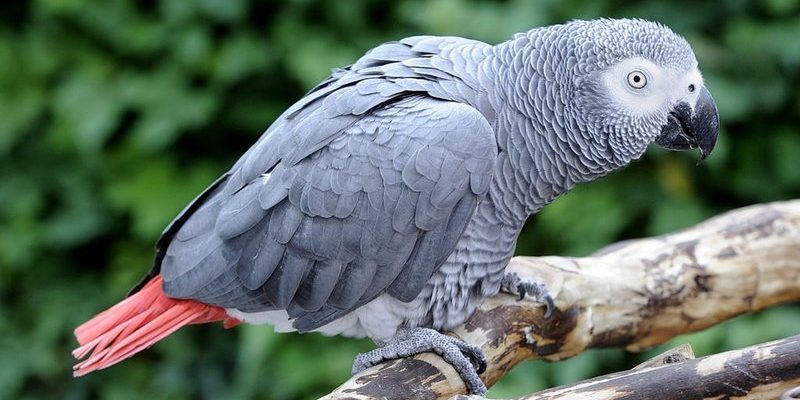
Imagine you’re a bird living deep in the lush rainforests of Central Africa. There’s a world full of sounds, colors, and challenges. For an African Grey parrot, every day is about finding food, avoiding predators, and connecting with other birds. Their ability to adapt has helped them not just survive, but flourish in a sometimes unpredictable world. Let’s delve into this topic and explore how these intelligent parrots navigate their surroundings!
Unique Physical Adaptations
African Grey parrots have some pretty amazing physical traits that help them thrive in their environments. First up, let’s talk about their beaks. These strong, curved beaks can crack open tough seeds and nuts, which are a staple in their diets. It’s like having a built-in tool for a buffet! This allows them to access a wider range of food sources compared to other birds that might struggle with harder-to-open snacks.
Their size also plays a role in their adaptability. The medium size of an African Grey, typically between 12-14 inches, helps them navigate through the dense foliage of their rainforest home. They can easily perch on branches or glide between trees, allowing them to explore and find food efficiently. Honestly, watching them move through the trees is a sight—it’s like they own the place!
Camouflage and Coloration
Another fascinating aspect of their physical adaptations is their coloration. The grey plumage of African Grey parrots isn’t just for show; it helps them blend into the canopy of the rainforests. This offers them a natural form of camouflage against potential predators. It’s a little like wearing a green shirt to hide in a garden—if you can’t be seen, you’re less likely to be bothered!
Their bright red tail feathers, while eye-catching, serve a purpose too. In flight, these colorful tails can signal to other birds in their flock. Just imagine a traffic light guiding birds to safety or alerting them to potential dangers. This combination of subtlety and flair is part of what makes African Grey parrots so adaptable.
Social Behavior and Communication
African Greys are known for their incredible intelligence and social nature, which are vital for their survival. They live in flocks that can range from 10 to over 30 birds, which offers them protection and makes it easier to find food. Being part of a group is like having a built-in support system; they can rely on each other for help when times are tough.
Communication plays a huge role in their social interactions. African Greys are excellent mimics and can imitate sounds from their environment, including human speech! This ability helps them bond with their flock and communicate warnings or find mates. It’s like having a smartphone app that keeps you connected to your friends. Their diverse vocalizations can alert others to the presence of predators or signal when it’s time to move to a new feeding area.
Learning from the Environment
One of the most interesting ways African Grey parrots adapt is through learning. They observe their surroundings and can quickly pick up on what might pose a threat or how to access food. Think about how we learn from experience—if you touch a hot stove, you learn to avoid it in the future. African Greys do something similar. They can understand routines and react to changes in their environment, which is key for their survival.
This adaptability doesn’t just help them in the wild. For those that are kept as pets, their intelligence means they need mental stimulation. Providing toys, puzzles, or even teaching them tricks is essential. If they don’t have enough to keep their minds busy, they might become bored and develop behavioral issues. So, whether in the wild or at home, these parrots are constantly learning to adapt!
Feeding and Foraging Strategies
When it comes to finding food, African Grey parrots have developed some smart strategies. These birds are primarily seed eaters, but their diet also includes fruits, nuts, and even insects. The ability to forage for various food sources is a huge advantage. It’s like being a gourmet chef, able to whip up different meals based on what’s available.
African Greys often forage in trees, using their feet to grasp branches and their beaks to explore leaves and fruits. They’re also known to be quite clever in locating hidden food sources. Have you ever seen a child dig through a toy box to find their favorite toy? That’s an African Grey searching for a hidden snack! Their keen eyesight and problem-solving skills make them excellent foragers.
Understanding Habitat and Range
Originally, African Grey parrots inhabit the dense rainforests, woodlands, and savannas of Central Africa. Their range covers several countries, from the Ivory Coast to the Democratic Republic of the Congo. Each of these regions presents unique challenges and resources, which the parrots have adapted to over time.
For instance, in some areas, they might have to navigate tougher terrain or seasonal changes that affect food availability. Understanding their habitat helps them anticipate changes and adjust their behaviors appropriately. It’s a bit like moving to a new neighborhood and learning where the best grocery stores are. Their adaptability is key to thriving in varying conditions!
The Impact of Human Activity
Unfortunately, human activity poses a significant threat to the habitats of African Grey parrots. Deforestation, urbanization, and the illegal pet trade can disrupt their natural environments. This is troubling, as it limits their ability to adapt and find food or safe nesting areas. Reducing their habitat is like taking away a child’s playground—it’s hard for them to thrive without space to roam and explore.
However, many conservation efforts are underway to protect these remarkable birds. Organizations are working to restore their habitats and educate people about the importance of preserving their ecosystems. You might be wondering what you can do to help—raising awareness, supporting conservation groups, or even fostering a love for these birds in your community can make a difference!
African Grey parrots are truly remarkable creatures, showing us just how adaptable and resilient wildlife can be. From their unique physical traits to their social behaviors, these parrots have developed countless strategies to thrive in their environments. They teach us the value of flexibility and intelligence when facing challenges.
As you reflect on these incredible birds, consider how we can all learn to adapt in our own lives. Whether it’s adjusting to a new situation or finding creative ways to overcome obstacles, we can take a page from the book of African Greys! Let’s celebrate these birds and work towards protecting their future, ensuring they can continue to thrive in their ever-changing world.

